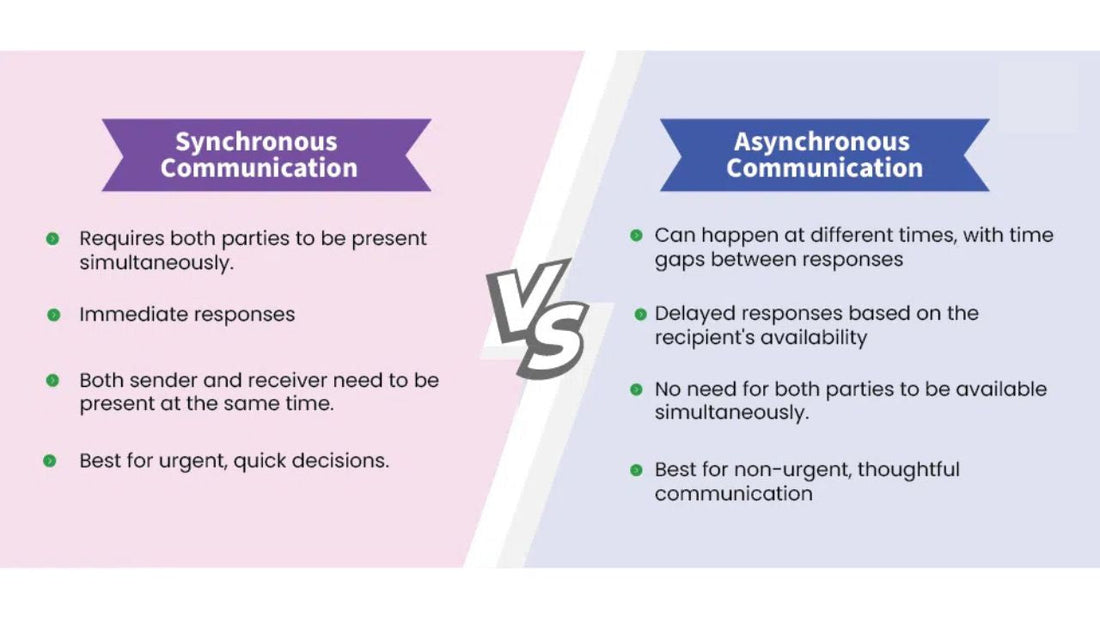
Synchronous vs Asynchronous: What You Need to Know In Today’s Workplace
They both have their own advantages and uses, with the familiarity of knowing when to use which greatly improving the efficiency of the workflow.
In an era where corporate work is global, remote, and hybrid, effective communication is the bedrock of any successful organization. As teams embrace a more distributed way of working, the choice between synchronous and asynchronous communication can make or break successful collaboration.
Synchronous communication refers to real-time interactions such as face-to-face communication or video conferencing, where everyone is present simultaneously. Some of those activities include video conferences, phone calls, or live chats. Synchronous communication is best when you need immediate feedback — brainstorming, urgent decision-making, troubleshooting.
Instead of synchronously, where all participants need to be present at the same time, asynchronous communication allows participants to communicate when it suits them. This enables for more flexible communication across time zone differences. Examples include emails, recorded video messages, and project management tools, where the recipient can respond when they wish. Asynchronous communication can be beneficial in situations where reflection and consideration in responses is important.
Both of these types of communication have their strengths:
Synchronous communication is useful for situations that require quick or real-time engagement, such as during a crisis or in collaborative brainstorming sessions.
Whereas synchronous communication brings immediacy and personal connection, its asynchronous variant brings about flexibility and autonomy, which are essential for collaborative work across teams situated in different time zones, or when a task requires thoughtful deliberation before response, which often needs to be detailed.
o Decisions needing a time-sensitive discussion or brainstorming
o Developing personal rapport in teams
o Timely feedback or conflict management
o Handling work across time zones
o Answering thoughtfully and in detail
o Working on documents or projects together over time
The HKMLC Smart Board facilitates both synchronous and asynchronous communication. It is thoroughly designed for hybrid teams, allowing real-time collaboration and documentation using its interactive whiteboard, recording, and documentation features for feedback and updates during meetings.
With the HKMLC Smart Board, both synchronous and asynchronous communication on a shared project is seamless, allowing team members to work together with greater efficiency, no matter their physical location. From real-time video calls to recorded sessions for later analysis, this multipurpose board helps write each facet of contemporary contact.
No comments
0 comments